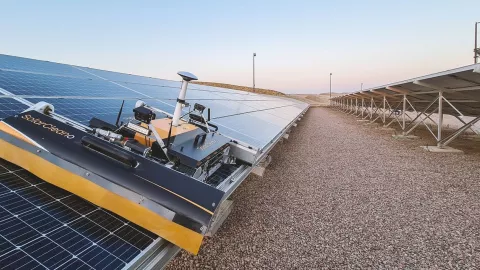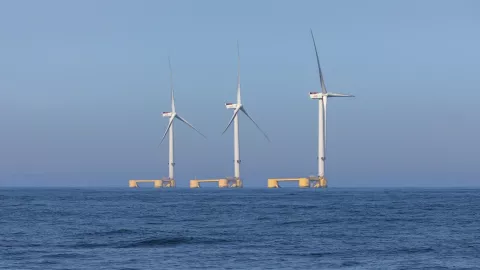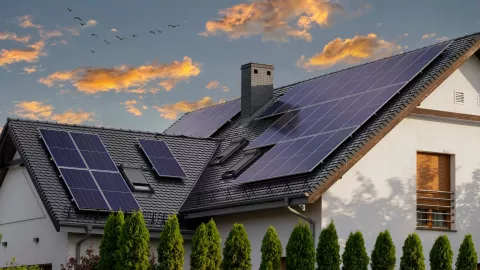
Most projections indicate that renewables, including hydro, will play a significant role, comprising between 50% and 80% of the energy mix by 2050. Recently, at COP28, the IEA recommendations were adopted to triple the renewable energy capacity. Renewables are here to stay!
We all know we need to change the way we use and produce energy.
Today, I want to focus on the supply side. Wind and solar energy, driven by climate urgency, are rapidly gaining prominence, and are expected to dominate the energy mix by 2050. But if we learnt anything in the last 30 years is that change is possible, but it takes time… and a lot of innovation. My two cents on that: while we push to make wind and solar the stars of our energy system, we should also prepare the next wave of renewable generation.
When I started my career at EDP, back in the early 2000s, if you had asked me what would be the energy mix in 20 years’ time, I probably would have answered: Hydro will have an important role, while coal will be phasing out to cleaner thermal generation, we will likely see the consolidation of gas and CCGT plants in our mix, nuclear is a tabu and there are some emergent technologies that harness wind and solar energy, and those will likely install some early GWs in the coming years.
Despite our imagination - and that hasn't changed - when it comes to rational business decisions, we need to be anchored in well-grounded scientific processes and in technologies with a solid track record, besides solid business cases. Back then, that was the case with conventional hydro and thermal generation. With nuclear, on the other hand, we still lived in a “purely centralized paradigm” and our common belief was that it would take 20 to 30 years to create nuclear knowledge and a “nuclear industry” … which meant nuclear was not a variable that our Portuguese energy planners could play with… nuclear was a matter for nuclear nations… and we were not one of them. Wind and solar were emerging and despite some promising wind endeavours in northern Europe or the fact that solar PV was increasing its efficiency and decreasing cost (mostly still in Labs) … they were still not “the thing”.
Twenty years after (YE 2022), coal and gas are still leading the installed capacity with 35% and 22%, respectively, despite an anaemic growth in recent years. Nuclear had a significant decrease, mostly driven by political reasons. While hydroelectricity remains important (as a renewable generator but also as an enabler for variable renewables, through pumping storage / flexibility), “non-conventional” renewables reached a solid 15% of the energy mix - with wind and solar dominating, at double digits’ growth rates, as we can confirm through the International Energy Agency (IEA) reports of 2023 and 2024. We can clearly see a direction forming, with the climatic threat in the centre of the global agenda and clean generation becoming paramount for a sustainable energy system.
Most projections indicate that renewables, including hydro, will play a significant role, comprising between 50% and 80% of the energy mix by 2050. Recently, at COP28, the IEA recommendations were adopted to triple the renewable energy capacity. Renewables are here to stay! But to get the most out of them, in the most efficient way and to address the energy trilemma (sustainability, price and security), innovation has played and will increasingly continue to play a crucial role. While we should “explode” the bureaucratic, technology (namely storage) and grid bottlenecks that prevent a faster acceleration of renewables, we should definitely put more thought and research and innovation critical mass in exploring the new “clean generation paradigms”.
Some noticeable avenues (non-exhaustive, a personal curation and with very different stages of maturity):
Path 1: Explore wind resource at sea, namely floating. Wind at sea is stronger and steadier. So, one logical move is to explore it. The tradeoffs are obviously higher capex /opex and risk. As we go deeper and further from the coast, floating technology becomes necessary. WindFloat was a flagship for innovation in this space but by looking at the facts and figures we also realize the mountain we still need to climb to enhance competitiveness. But offshore wind could also be an anchor for further development at sea, including maturing ocean energy or exploring dual use avenues such as fish farming.
Path 2: Solar PV, what’s next? Exploring higher efficiency and synergies with hydroelectricity by hybridizing dams with floating PV – and leveraging that knowledge to make the leap to explore floating PV more broadly, even at sea; make PV more sustainable through circular approaches and agri-PV (design PV systems that also nurture nature and agriculture); explore higher efficiency with perovskites.
Path 3: Future nuclear. While conventional nuclear continues to show the same challenges (notably frequent cost and time overruns which lead to uncertainty on the true cost and reliability of nuclear), recent years have shown progress in small modular reactors (from GWs to few hundreds of MWs), use of molten salts (instead of water, to cool systems, promising greater efficiency) or nuclear fusion. In fusion, for example, two recent facts brought us hope: 1) the fact that for the first-time scientific community was able to extract more power than the one used to trigger the fusion reaction or 2) the rise in private investment in the area, accelerating development, as, for example, has happened with Space-X for space transportation.
Path 4: A myriad of (still a bit farfetched, I’ll give you that) possibilities. Ocean energy, meaning harnessing the power in waves, tides, salinity or temperature gradients… space solar, meaning, PV systems orbiting above the clouds, generating 8760 h/year of solar PV power and transmitting it through microwaves to earth… making enhanced / induced geothermal a reality at scale… or several other energy research niches… while these may look like scenes from a science fiction movie, there is already significant time and effort put into such research arenas.
I have no crystal ball and there is no silver bullet. The moto, in my view, is to explore and deepen such avenues. Feeding these possibilities is feeding the dream of a net zero world. If wind and solar are what come to mind when we think renewables – today, these new possibilities are a metaphor for our green energy future.
Focus is also of the essence. Wind and especially solar had spectacular learning curves (namely solar PV with a 20% cost decrease every time its capacity doubled). But for these emerging possibilities, in general we’re still not there. For learning curves to really start “working” we will always need risk takers / early adopters and favourable environments, but the R&D community should be able to bring emerging technologies to a TRL (Technology Readiness Level) that is sufficient to create market traction. For that we need to pull resources together and generate critical mass. To do that, we need to make choices.



